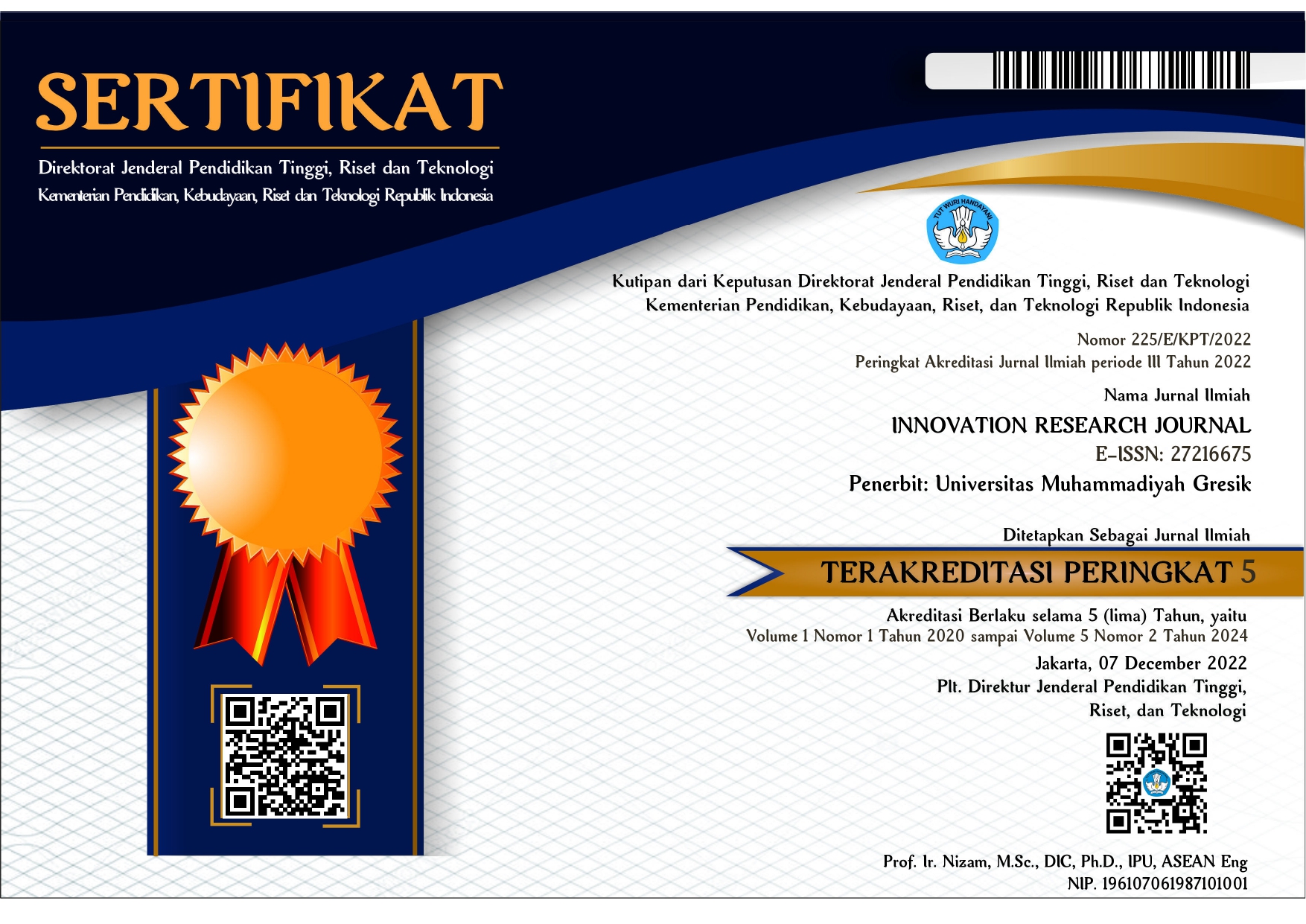Exploring the Link between Acne Vulgaris Severity and Adolescents' Quality of Life in Gresik
DOI:
https://doi.org/10.30587/innovation.v5i2.8400Keywords:
Keywords: Acne Vulgaris, Quality of Life, AdolescentsAbstract
Background :Adolescence is a transition period between childhood and adulthood, this creates conflict within adolescents which often gives rise to strange and awkward behavior, this is because during adolescence there is a period of puberty which can change physically and psychologically. So the appearance of acne vulgaris can disrupt teenagers' self-confidence. The aim of the study was to analyze the relationship between the severity of acne vulgaris and the quality of life of adolescents. Research design :The research design used is correlation research using a cross sectional approach. The population design used was teenagers in Gresik, the sample size was 210 teenagers, with a sampling technique using simple random sampling. Data collection used the CADI questionnaire and observation sheets. The variables measured were the severity of acne vulgaris and the quality of life of adolescents. Data analysis used cross tabulation and sperm rank test. Research result : Of the 210 students at SMAN who experienced mild degrees (46.2%), moderate degrees (45.2%), severe degrees (8.6%). Half of teenagers experience mild degrees. And regarding the quality of life of students and students who had no disturbances (1.0%), mild disturbances (25.7%), moderate disturbances (31.9%), severe disturbances (41.4%), half of the respondents experienced severe disturbances. The results of the Spearman rank test are p = <0.05, meaning there is a significant relationship. Conclusion : There is a relationship between the severity of acne vulgaris and the quality of life of adolescents in Gresik.
Keywords: Acne Vulgaris, Quality of Life, Adolescents
References
Alfein, R. T. S. (2022). Kuesioner Cardiff Acne Disability Index ( Cadi ).
Astrid, T. (2020). Akne Vulgaris Dewasa : Etiologi, Patogenesis Dan Tatalaksana Terkini. Jurnal Kedokteran Universitas Palangka Raya, 8(1), 952–964. https://doi.org/10.37304/jkupr.v8i1.1500
Chintya, S. A., Khomastin, S., & Farida, L. (2022). Pengaruh Tingkat Kecemasan Sosial, Depresi Dan Kualitass Hidup Terhadap Acne Vulgaris. ULIL ALBAB: Jurnal Ilmiah Multidisiplin, 1(6), 1457–1463.
Eka, W. (2019). Karakteristik Penderita Acne Vulgaris di Rumah Sakit Umum (RSU) Indera Denpasar Periode 2014-2015. Jurnal Medika Udayana. Universitas Udayana., 8(11), 1–4. https://ojs.unud.ac.id
Lema1, E. R. M., Fitryasari2, R., & Hanik Endang Nihayati. (2022). Peran dukungan kelompok sebaya terhadap psikologis remaja dengan acne vulgaris. Journal of Telenursing (JOTING), 4(8.5.2017), 2003–2005.
Notoatmodjo, S. (2018). Metodelogi penelitian kesehatan.
Nursalam. (2017). Metodelogi penelitian ilmu keperawatan (P. P. Lestari (ed.); Aklia Susl). Novietha Indra Sallama. http://www.penerbitsalemba.com
Sibero, H. T. (2019). Tatalaksana Terkini Acne Vulgaris. Wisconsin Medical Journal, 72(9), 189–191.
Thamrin, A., Suryanti, & Wahyu, R. (2022). Faktor – Faktor Yang Berhubungan Dengan Timbulnya Acne Vulgaris Pada Mahasiswi Angkatan 2021 Fakultas Kedokteran Universitas Batam. Zona Kedokteran, 12(1), 58–67.
yankes. (2022a). Jerawat Pada Remaja: Kenali Dan Atasi. Yankes.Kemkes.Go.Id. https://yankes.kemkes.go.id/read/421/jerawat-pada-remaja-kenali-dan-atasi









